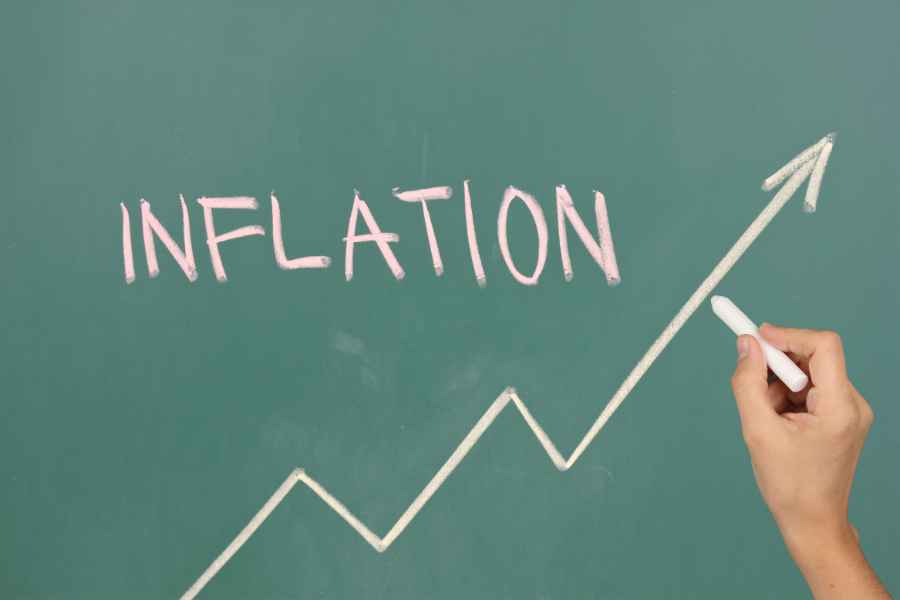The European Central Bank (ECB) is the central bank responsible for the monetary policy of the Eurozone, which includes 20 of the 27 European Union (EU) member states that have adopted the Euro (€) as their official currency.
The following article will introduce you to the structure and role of the European Central Bank, as we understanding of its monetary policy – particularly, how the ECB rate decision may affect the European stock market and the Euro.
ECB History & Functions
The European Central Bank was established on June 1, 1998, with its headquarters located in Frankfurt, Germany. Despite its relatively short history of only 26 years, the ECB is one of the most important and closely watched central banks in the world, alongside the Federal Reserve, mainly due to two reasons:
- The ECB is the monetary policy authority for the world’s third-largest economy – Eurozone.
- The ECB is the issuing institution of the world’s second most traded and reserve currency – Euro (€).
Similar to the Federal Reserve, the European Central Bank’s primary role and objective is to ensure price stability within the Eurozone by targeting an inflation rate of 2% per annum. This goal is achieved through the formulation and implementation of monetary policy.
The ECB is one of the most unique central banks in the world, overseeing the monetary policy of the Eurozone’s 20 member states. However, this diversity poses significant challenges to the ECB as these countries have varying social conditions and economic developments.
As a result, the central banks of Eurozone member states cannot tailor monetary policy to their specific economic situations, contributing to issues such as the Eurozone debt crisis. Despite these challenges, the ECB continues to operate effectively and remains one of the most respected central banks globally.
ECB Structure & President
The European Central Bank is comprised of four main entities – the Executive Board, the Governing Council, the General Council, and the Supervisory Board.
Among them, the Governing Council is the main decision-making body and the most closely watched by the financial market, as it is responsible for formulating the monetary policy for the Eurozone. Here is an overview of the ECB’s entity bodies:
1. Executive Board
The Executive Board consists of six members, including the President and Vice-President of the ECB, all appointed by the European Parliament. Its main responsibilities include preparing Governing Council meeting and implementing the monetary policy decisions made during these meetings.
3. General Council
The General Council consists of the President and Vice-President of the ECB, as well as the governors of the central banks of all EU member states, including those outside the Eurozone. In other words, it includes central bank officials from EU countries that do not use the euro.
2. Governing Council
The Governing Council is the ECB’s main decision-making body, consisting of the six Executive Board members and governors of national central banks. It formulates monetary policy for the Eurozone, holding two general meetings monthly, with rate decisions meeting on every six weeks.
4. Supervisory Board
The Supervisory Board meets every three weeks to discuss, plan, and implement the supervisory responsibilities of the European Central Bank. The board consists of a Chair, a Vice-Chair, four ECB representatives, and representatives from national supervisory authorities.
As of June 2024, the President of European Central Bank (ECB) is Christine Lagarde. She has been serving in this role since November 1, 2019, with the tenure of 8 years.
ECB Meeting & Rate Decision
The ECB, or to be more precise, the ECB’s Governing Council, meets regularly to discuss and decide on the monetary policy for the Eurozone. These meetings are held every six weeks to evaluate the Eurozone’s economic condition and to make decisions on monetary policy according to the economic situation. This includes setting the benchmark rate for the Eurozone.
Here are some key components of the meeting;
- The primary goal of these meetings and the resulting monetary policy decisions is to maintain price stability and to keep the inflation target within the Eurozone at 2%.
- ECB members engage in in-depth discussions during the meeting, reviewing economic conditions and debating potential policy actions with the aim of achieving their primary goal.
- Decision on interest rates and other policy measures are done through voting by Governing Council members.
- Rate decision would be announced during a press conference held after the meeting, along with the press statement from ECB’s president.
The ECB rate decision made during the monetary policy meeting is considered an important event for the financial market. In addition to that, the ECB press conference following the rate decision announcement is also a key event to watch. During this press conference, the market closely follow gain insights into the ECB’s future policy path.
The Press Conference is particularly important when the central bank leaves the benchmark rate unchanged, as the market focuses on the ECB President’s statement on their future monetary policy direction — whether it leans hawkish or dovish. This typically influences financial markets significantly.
ECB Policy Rate & Interest Rate
The Governing Council holds interest rate decision meetings are mainly to decide on the Interest rates—whether to raise, lower, or maintain them. The ECB interest rates refer specifically to three policy rates. By adjusting these policy rates, the ECB can influence interbank lending rates, thereby affecting overall market interest rates. Below are details of the ECB’s three policy rates:
1. Main Refinancing Rate
Main refinancing operations (MRO) are the primary monetary policy tool of the European Central Bank . Eurozone banks can borrow funds from the ECB using eligible securities as collateral, with an agreement to repurchase them one week later. The interest rate paid by banks in MRO operations is known as the main refinancing rate.
The main refinancing rate serves as the benchmark interest rate in the Eurozone. It represents the cost for banks to obtain funds from the ECB through normal channels and is the lowest level of interest rate in the Euro area. When ECB interest rates are mentioned, they typically refer to the main refinancing rate.
2. Deposit Facility Rate
The deposit facility rate is the interest rate at which banks earn overnight interest on funds deposited with the European Central Bank (ECB), used to manage short-term interest rates in the Eurozone. It is set below the main refinancing rate and serves as the lower limit for overnight interbank lending rates. Banks consider lending funds overnight to other banks only if rates exceed this rate, rather than keeping funds deposited at the ECB.
3). Marginal Lending Facility Rate
The marginal lending facility rate is another tool used by the ECB to manage short-term interest rates. It represents the interest rate banks must pay when they borrow overnight funds directly from the ECB. This rate is higher than both the main refinancing rate and the deposit facility rate, setting an upper limit for overnight interbank lending rates. Banks in need of funds will borrow from other banks only if the lending rate is below this facility rate.
By adjusting these three key policy rates, the European Central Bank can influence interbank lending rates, thereby impacting credit and liquidity conditions in the overall market. These rates move in sync; for instance, if the ECB raises rates by 25 basis points on May 4, 2023, each of these rates would increase by 25 basis points accordingly.
Together, these policy rates allow the central bank to adjust the cost of borrowing for banks, thereby influencing broader economic conditions. By carefully adjusting these rates, the ECB aims to navigate the complex dynamics of the Eurozone economy, striving to achieve a balance between fostering economic growth and maintaining price stability.
Lower Interest Rates
- Reduce the cost of borrowing, encouraging spending and investment by businesses and consumers, This leads to increased market demand.
- Increased market demand boost economic activity but may also lead to price increase (Inflation).
Higher Interest Rate
- Increase cost of borrowing, which would reduced spending and investment by businesses and consumers, leading to decreased in market demand.
- Decreased demand cools down an overheated economy and thus controls inflation.
ECB Meeting Dates in 2024
During the European Central Bank’s rate decision meetings held every six weeks, the Governing Council discusses the economic and inflation situation and votes on changes to the benchmark interest rate. The results of the rate decision are announced at a press conference held at 14:15 Central European Time on the same day.
The European Central Bank meeting dates for 2024 is as below:
| European Central Bank Meeting Date 2024 | ||
|---|---|---|
| Date | Consensus Rate | Actual Rate |
| 25 January 2024 | 4.50% | 4.50% |
| 2 March 2024 | 4.50% | 4.50% |
| 11 April 2024 | 4.50% | 4.50% |
| 6 June 2024 | 4.25% | 4.25% |
| 8 July 2024 | ||
| 12 September 2024 | ||
| 17 October 2024 | ||
| 12 December 2024 | ||
Four weeks after each rate decision is announced, the ECB would also releases the meeting minutes. These ECB minutes documented the Governing Council’s review and examination of financial, economic, and monetary policy developments, policy options, and provide a summary of the Council’s discussions and decisions.
ECB Interest Rate Hike
1). ECB Rates Hike Reasons
The ECB adjusts interest rates primarily in response to its inflation target and the overall economic condition. As mentioned, maintaining a 2% inflation target is crucial for achieving price stability and balanced economic growth. The monetary policy adjustment of the ECB is rather easy to understand, in simple term:
- Whenever inflation gets too high, the ECB hike rates to curb it in order to maintain price stability.
- Whenever inflation is too low or there is economic slowdown, the ECB cut rates to spur growth.
Since the European crisis in 2014, the ECB has adopted an ultra-loose monetary policy, keeping the benchmark interest rate near zero for a long time. In 2022, major central banks worldwide entered a rate-hiking cycle, and the ECB was no exception. From July 2022 to September 2023, the ECB raised the benchmark interest rate from 0.25% to 4.5%.
Similar to the reasons behind the US rate hikes, the ECB’s rate hikes were driven by high inflation. As previously mentioned, the ECB’s inflation target is an annual rate of 2%, while at its peak in 2023, European inflation exceeded 10%. Therefore, despite the economic slowdown at the time, the ECB needed to raise rates to curb inflation.
In a high-interest-rate environment, the Eurozone inflation rate gradually slowed down. As of April 2024, the Eurozone’s annual CPI Data was 2.6%, approaching the ECB’s 2% inflation target.
2). Impact of ECB Rate Hike
According to basic economic theory, when a central bank raises interest rates, the country’s currency typically appreciates, while the stock market usually declines.
The chart below shows the trends of the EUR/USD and the German DAX index since the ECB began raising rates in July 2022. The blue curve represents the ECB interest rate, the yellow line the German DAX index, and the red line represents EUR/USD. These trends since July 2022 seem to diverge significantly from the economic theory.
This is largely due to the US Federal Reserve started raising rates as early as March 2022. The EUR/USD and European stock markets have been primarily driven by US monetary policy rather than European monetary policy. The European monetary policy will only have more substantial impact when there is significant divergence between the two monetary policies.
ECB Interest Rate Cut
In June 2024, the European Central Bank lowered the benchmark interest rate from 4.5% to 4.25%, marking the beginning of a rate-cutting cycle. The chart below illustrates the relationship between the ECB interest rate (blue line), the Eurozone inflation rate (blue line), and the Eurozone GDP annual rate (red line), explaining the reasons behind the ECB’s rate cuts. As the inflation rate returned to near the 2% annual target level, the ECB shifted its focus from controlling inflation to promoting economic growth.
Since the rate hikes began in July 2022, inflation has been effectively controlled, but the Eurozone GDP growth has also been suppressed by the high-interest rates, remaining at low levels. After September 2023, the Eurozone GDP growth rate even approached zero growth. With inflation under control, the ECB’s monetary policy has shifted to cutting rates to stimulate economic growth.





